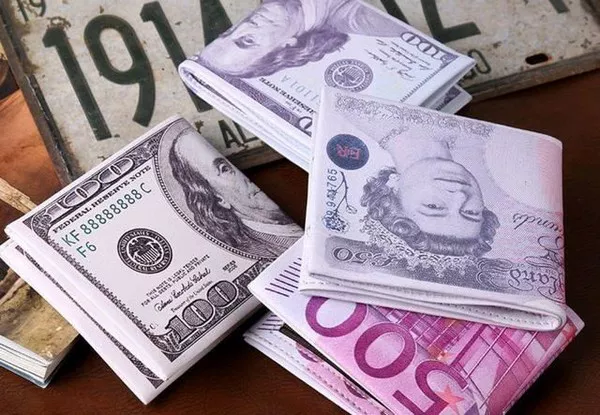The British pound sterling (GBP) stands as one of the world’s oldest and most enduring currencies. Its history is steeped in tradition, bearing witness to centuries of economic, political, and social change. This article delves into the fascinating origins of the GBP, exploring its evolution from a weight of silver to the modern currency we know today.
A Glimpse into Ancient Currency
The concept of currency predates written history, with ancient civilizations using various forms of money for trade and commerce. The early English, like many societies, relied on barter systems and commodity-based currencies, such as cattle, grain, and metal objects, for exchange.
Metals like copper, bronze, and silver eventually emerged as preferred forms of currency due to their durability, divisibility, and intrinsic value. Silver, in particular, gained prominence in England, giving rise to the term “sterling,” which would later become synonymous with the pound.
The Origin of the Term “Sterling”
The term “sterling” has a long and storied history. It can be traced back to the Norman Conquest of England in the 11th century when the English monetary system underwent a transformation.
William the Conqueror and his successors introduced a silver coin called the “penny,” which became the standard unit of currency in England. These pennies were made of 92.5% silver, a purity known as “fineness.” The term “sterling” was derived from the Old Norman word “esterlin,” which referred to a coin with high silver content.
The use of the term “sterling” to describe English currency continued over the centuries, and it eventually became synonymous with the pound, which was equal to 240 pennies.
The Pound’s Renaissance: 15th Century England
The pound sterling experienced a renaissance during the 15th century, primarily due to the influence of the Tudor monarchs, especially Henry VII and Henry VIII.
Henry VII initiated significant coinage reforms, standardizing the silver content of the penny and introducing a new coin, the “testoon,” which was worth 12 pence and contained a high silver content. This marked the beginning of the pound’s ascent as the primary unit of currency in England.
Under Henry VIII’s reign, the pound experienced further development. He established the Royal Mint in 1540, which played a pivotal role in producing standardized and reliable coinage. This era also saw the introduction of the “sovereign,” a gold coin representing one pound, further reinforcing the pound’s role as a dominant unit of currency.
The Pound as an International Currency
As England grew in prominence and power on the world stage, the pound sterling began to extend its influence far beyond its borders. It evolved into an international currency, accepted and used in trade with other nations.
One key factor in the pound’s international adoption was the British Empire’s vast reach during the 19th and early 20th centuries. As the empire expanded, so did the use of the pound in its territories. Sterling became the official currency in many colonies, reinforcing its status as a global currency.
Decimalization and the Modern Pound
Prior to 1971, the pound sterling was based on a complex system of pounds, shillings, and pence, known as “£sd.” This system, with 12 pence in a shilling and 20 shillings in a pound, was somewhat convoluted. Decimalization aimed to simplify the currency and bring it in line with international standards.
On February 15, 1971, “Decimal Day,” the United Kingdom officially transitioned to a decimal currency system. The pound was retained as the primary unit, with each pound divided into 100 pence. This new system made calculations and transactions more straightforward, facilitating international trade and financial interactions.
The Pound’s Resilience and Value
Throughout its long history, the pound sterling has weathered numerous economic challenges, including inflation, recessions, and financial crises. It has maintained its status as a resilient and valuable currency on the global stage.
One of the key attributes contributing to the pound’s resilience is the United Kingdom’s strong and stable economy. Its financial sector, centered in London, is a global hub for banking and international trade. The Bank of England, founded in 1694, plays a pivotal role in managing the pound and the country’s monetary policy.
The pound’s value, like all currencies, fluctuates in response to economic conditions, market sentiment, and geopolitical events. Exchange rates between the pound and other major currencies, such as the US dollar and the euro, are subject to constant change.
Challenges and the Future of the GBP
Despite its enduring legacy, the pound sterling faces a range of challenges in the 21st century. These challenges include:
Brexit Uncertainty: The United Kingdom’s decision to leave the European Union (Brexit) has introduced uncertainty into the currency markets, leading to fluctuations in the pound’s value.
Global Economic Factors: The pound is affected by global economic trends, including trade tensions, interest rates, and economic growth in major economies.
Technological Advances: The rise of digital currencies and financial technology has the potential to reshape the way people conduct transactions and manage their finances.
Inflation and Economic Stability: The Bank of England plays a vital role in managing inflation and maintaining economic stability, which directly impacts the value of the pound.
In conclusion, the British pound sterling, abbreviated as GBP, has a rich history dating back centuries. Its evolution from a weight of silver to a global currency reflects the changing economic and political landscape of the United Kingdom and the world. Despite challenges and uncertainties, the pound remains a symbol of stability and strength in the world of finance. Its legacy continues to influence international trade and finance, shaping the modern global economy.


